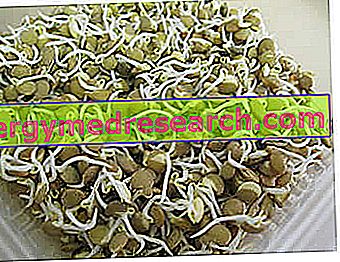Vegetables: what are they?
Vegetables are foods of vegetable origin belonging to the VI and VII group of foods.
The definition "vegetables" refers to the products of the vegetable garden, that is to say all those fruits, flowers, seeds, leaves, stems, roots, tubers and bulbs that can be grown in the garden, therefore at home level;

- Production level / technique
- Length / duration of the commercial chain
The production level / technique and the length / duration of the vegetable supply chain can distinguish the overall nutritional value and the related impact on the health of the consumer.
Vegetables: what are they?
As anticipated, the group of vegetables contains numerous types of vegetables produced at the garden level; to get a more precise idea of what they are and their actual consumption, below we will list the most well-known and common types:
- Fruit vegetables: all the drupes, berries, esperides and apples are fruit-bearing vegetables, then tomatoes, courgettes, aubergines, cucumbers, pumpkins and peppers
- Flower vegetables: artichoke, cauliflower, broccoli, asparagus, pumpkin flower etc.
- Seed vegetables: legumes: all beans, chickpeas, chickling peas, lentils, peas, broad beans, lupins, etc. NB. Cereals are not considered vegetables because their cultivation foresees production limits (yield per surface) so high as to NECESSARY plots greater than those intended for a simple "vegetable garden"
- Leafy vegetables: lettuce, radicchio (green and red), rocket, valerian, borage, spinach, catalogna, cabbage, cabbage, chard, chicory, dandelion, etc.
- Stem or bulb vegetables: celery, fennel *, thistle etc.
- Tuber vegetables: potato, American potato, Jerusalem artichoke etc.
- Bulb vegetables: fennel *, garlic, onion, shallots, leek, etc.
Vegetables: nutritional properties
Vegetables and vegetables in general are plant foods that are common to the contribution of:
- water
- Dietary fiber and carbohydrates NOT available: both soluble and insoluble
- Available carbohydrates: both simple (fructose) and complex (starch)
- Low and medium biological value proteins: average ONLY for legumes, low for all other vegetables
- Unsaturated fatty acids: monounsaturated and non-essential polyunsaturated (especially omega-9 oleic acid) and essential polyunsaturated (especially omega-6 linoleic acid and α-linolenic omega-3)
- Plant sterols, lecithins, antioxidants and other useful molecules: phytosterols / phytoestrogens (which hinder the absorption of cholesterol and should reduce the symptoms of climacteric syndrome), lecithins (which also improve cholesterol levels at METABOLIC LEVEL), antioxidant polyphenols, etc.
- Water-soluble and fat-soluble vitamins: especially vitamin C (ascorbic acid), vitamin A (retinol equivalent) and folic acid
- Mineral salts: above all potassium (K) and magnesium (Mg), but also iron (Fe - although not very bioavailable) and calcium (Ca)
- Anti-nutritional and chelating molecules: for example phytic acid, oxalic acid, tannins, etc., which bind some mineral salts (iron, calcium, zinc and selenium) hindering their absorption.
Differences between vegetables and commercial vegetables
As mentioned above, the differences between commercial vegetables and vegetables arise from: production level / technique and the length / duration of the commercial chain.
Vegetable / vegetable production level / technique: without going into too much detail, we remind you that to cultivate vegetables on a large scale it is necessary to respect a specific production disciplinary; this, which can be of traditional agriculture, integrated struggle or organic farming, imposes well-defined standards, which, while on the one hand guarantee the uniformity of the vegetables on the market, on the other hand leave no room for the "details" care, a peculiar aspect of vegetables produced at home or in any case on a small scale. Some examples are: hand weeding, manual pruning, the use of organic compost such as manure or compost, changing or adding land, respecting seasonality, respecting ripening etc. All this has a relatively positive impact (with respect to the caregiver's experience and dedication) on the quality of the mature vegetable. NB . However, it is not said that a DEBBA vegetable is of superior quality to a large-scale marketed vegetable; often, cultivating at home without the help of pesticides, anti-catalysts and herbicides, the plants are infected / infested, concluding the ripening cycle NEGATIVELY.
Length / duration of the commercial chain: to make it short, the vegetable or vegetable removed or eradicated or cut immediately begins a process of enzymatic deterioration, decomposition and oxidation. The conservation techniques used on fresh vegetables belonging to a long chain (refrigeration, controlled atmosphere, modified atmosphere, etc.) are very effective (especially against oxidative deterioration and bacterial / fungal decomposition, less towards the enzymatic one), but do not block completely the deterioration of the product (especially the enzymatic aspect). This translates into a significant reduction in the organoleptic, gustatory and nutritional value (especially vitamins) of the vegetables sold in the long chain; for their part, vegetables produced at home have a practically absolute integrity. NB. We remind you that for consumers it is still possible (almost everywhere) to buy from small "short chain" merchants.



